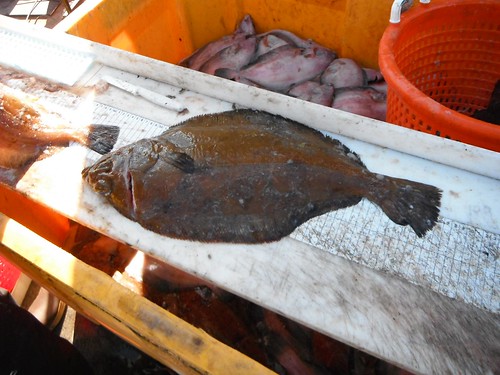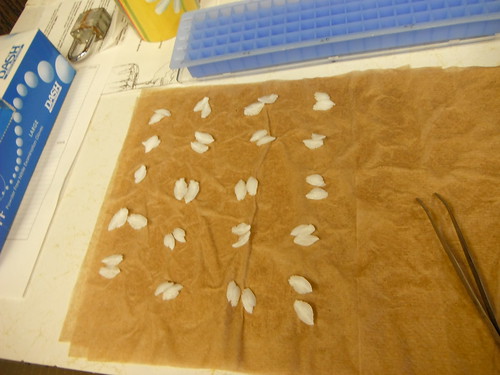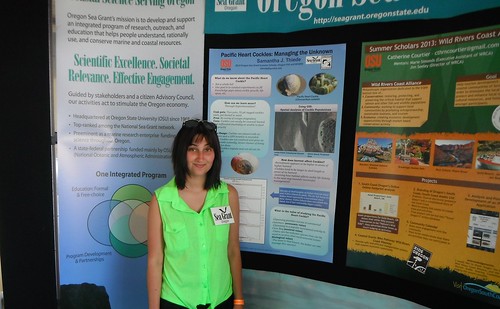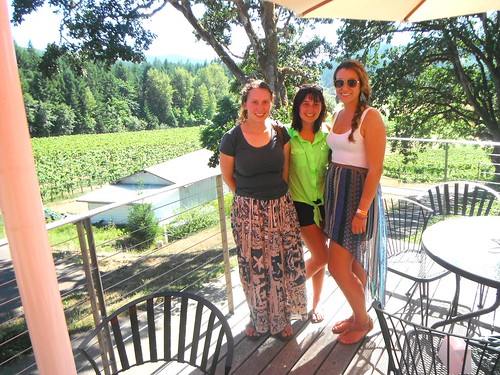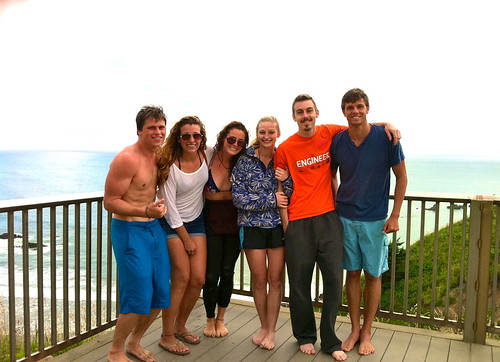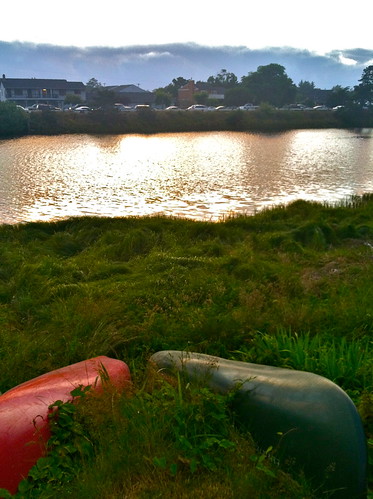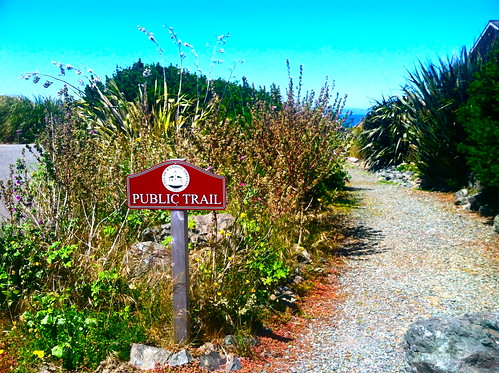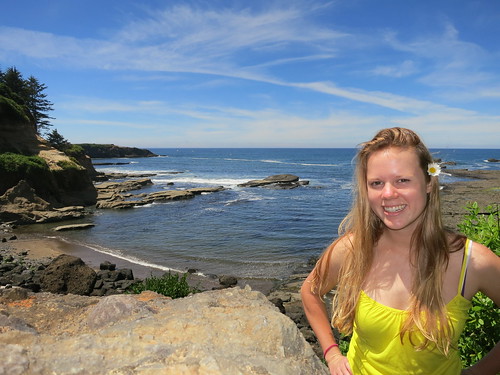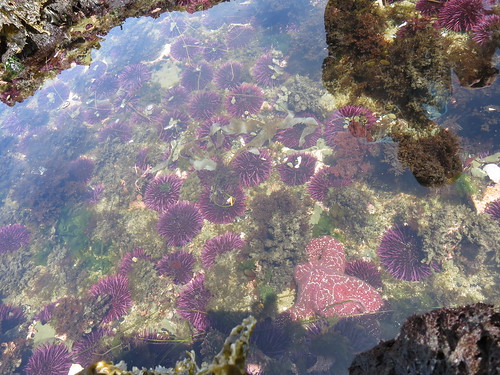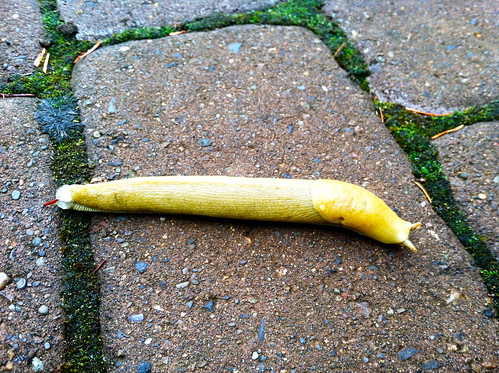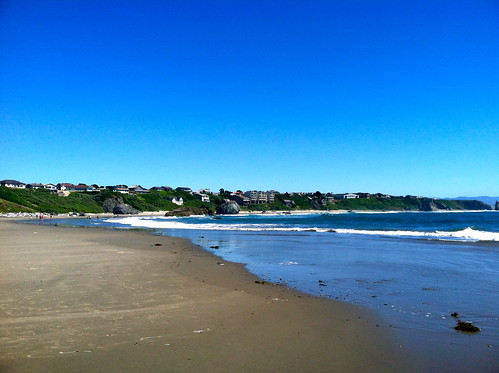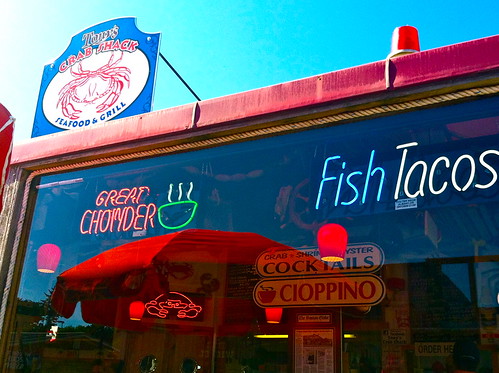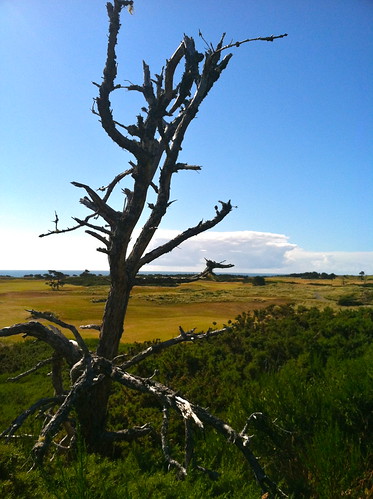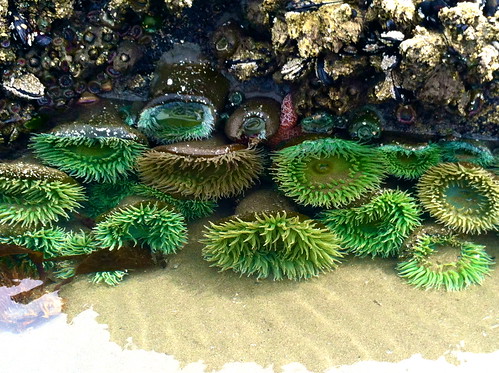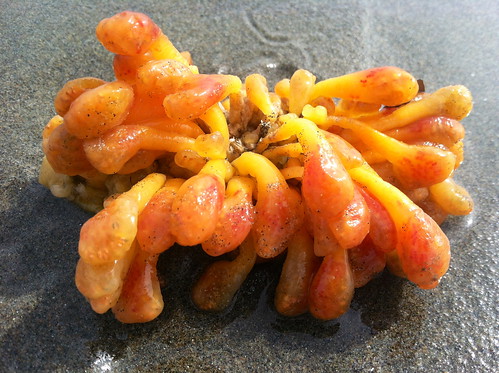Where has the time gone? Week five is completed, which means I’m halfway through my internship. This week was especially exceptional. Scott and I have continued our red rock crab surveys with much more success in capturing red rocks than in the past few weeks. I’ve also started on writing up a memo for the cockle experimental methods we’ve been developing and it’s awesome to finally put my scientific writing abilities to the test.
On Wednesday Dean Headlee invited me to come along with him to Hallmark, a fish processing plant. We intercepted two boats—the Apache and the Nel Ron Dic—as they brought in their trawl catches. It was our job to sample these fish (30-50 fish per sample by species). I was excited to handle so many species of fish such as green stripes, ling cod, Dover sole, English sole, big skates, long-nosed skates, yellowtail rockfish, and albacore tuna. We took the lengths (fork or total length, depending on the fish species), weight, sex and stage of sexual maturity, and we also pulled otoliths. After watching Dean pull several otoliths from the fish he let me give it a try and I was actually quite good at it!
Pulling otoliths, in my opinion, is an art form. If you don’t cut into the right place or know the right place to look you may never find them. However, Dean’s technical lesson of otolith pulling had me removing them like a pro in no time. The majority of the fish that we pulled otoliths from were flatfish. In order to pull an otolith from a flatfish you must first cut along the operculum (gill flap). This is where the art comes into play; you just have to know exactly where on the operculum to cut by doing it yourself and seeing what works, verbal instructions will only get you so far. Eventually, with practice, you just know where to cut into.
Once you’ve cut into the head you must find and remove the otoliths. Typically they sit on the right side of the cut (if you do it correctly). They are very small and in a fluid-filled pouch but once I had practiced on a few fish I could pull them blindly without even needing to see them. We put all the otoliths into individual slots in trays and assigned a number to them so we could age the fish later on.
As it being week five, it was time for all the Sea Grant Summer Scholars to attend our mid-summer check-in. Catherine, a fellow scholar, and I drove up to Corvallis on Thursday evening. It was awesome to ride with her as the scholars are pretty spread out through Oregon and we don’t get to interact much with each other.
Friday was the mid-summer check-in. We started off the morning with a presentation about outreach, which was definitely an eye-opener. Our speaker, Shawn, spoke with us on the public’s perceptions of scientists and how the public uses those perceptions to draw conclusions and form ideas and opinions. We also did an activity that helped us to understand how to guide others to conclusions about scientific material so that the information is absorbed.
It was great to finally spend time with my fellow summer scholars. Sunday, before we all parted ways, a few of us grabbed tubes and floated the Willamette. I had never floated a river before and it was such a relaxing experience (though the water was a little chilly!). The backdrop of the mountains as we floated down the Willamette was simply gorgeous; I couldn’t have dreamed up more beautiful scenery myself!
I was gone for a four day weekend and what do I come back to find on my desk waiting for me? Dead fish to be identified, a bag of shells, and a crab molt. Most people come back to desks piled with paperwork; I come back to dead animals. Life of a biologist, everyone! I wouldn’t trade it for anything.
This week I will be heading to Astoria with Steven Rumrill to do razor clam surveys and I am beyond thrilled! Until next time!

